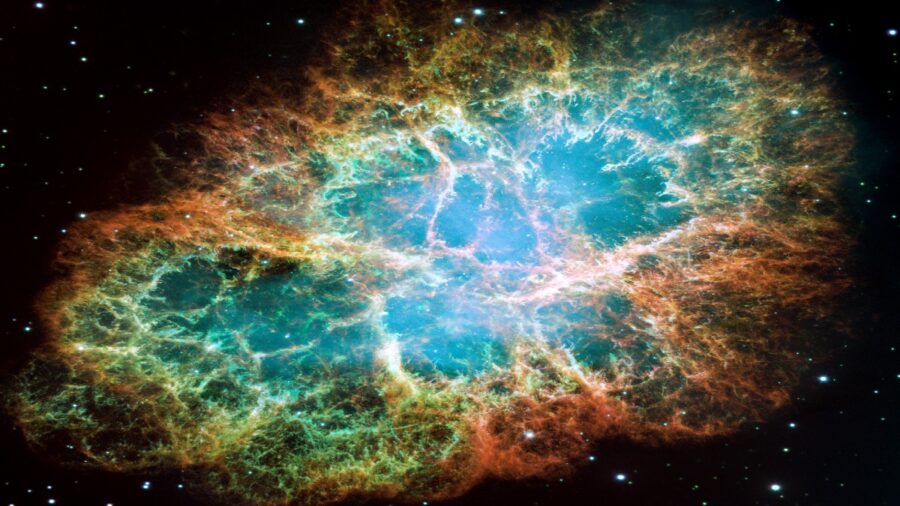Scientists Discover Energy Bursts Slicing Stars In Half

Scientists have reason to believe that not all stars are destroyed equally, according to Futurism. In a yet-to-be-peer-reviewed preprint paper, a team of NYU scientists walks us through their research that points to the possibility of stars being sliced in half by an intense beam of energy now known as a relativistic blade. Normally, after stars explode into an intense supernova, they become black holes or dense neutron stars known as magnetars.
New research suggests that some magnetars get sliced in half during an interim phase and send massive bursts of radiation out into the solar system that burn much longer than your average supernova.
Scientists discovered incredibly dense neutron stars called magnetars can cut themselves in half with a powerful burst of radiation.
This new research could very well explain why some gamma ray bursts last so much longer than others. Magnetars, which are neutron stars that boast an extremely powerful magnetic field, are the center of this study and can provide insight into this newly discovered phenomenon if pursued further. A magnetar’s intense magnetic field causes its own radiation to slice through the star like a hot knife through a watermelon, which presents a cosmic light show by the likes of which we’ve never seen before.
It remains to be seen how commonly stars succumb to getting sawed in half by their own energy, but now that the line of thinking has been established, researchers can continue to further study relativistic blades, and what they mean in the grand scheme of things.
The paper itself, which can be found on arXiv, describes the phenomenon as an outflow “generated by a priori magneto-centrifugally-driven, relativistic magnetar winds,” which are said to be powerful enough to carve its way through a star’s dense stellar interior. Though this research is still in its infancy, it provides an alarming amount of insight into the death cycle of stars that occurs immediately after the collapse of a massive star. It’s almost terrifying to think that nuclear fission reactions can happen on such a large scale that they resemble something that you’d see in a science-fiction movie.
Every time a star runs out of fuel, it can potentially get ripped in half instead of collapsing on itself, and it’s still a concept that we’re still trying to wrap our heads around.
For as long as we have been able to gaze up at the sky and marvel at its many mysteries, we’ve had questions about the stars above us and how their overall functions play into the mechanics of our known universe. Until the NYU team pursued the concept of relativistic blades, we had more questions than answers about the origins of gamma ray bursts.

It remains to be seen how commonly stars succumb to getting sawed in half by their own energy, but now that the line of thinking has been established, researchers can continue to further study relativistic blades, and what they mean in the grand scheme of things. The models have been created, and the research will have to be peer-reviewed before we can say conclusively that relativistic blades are a common occurrence in our solar system, but we’re taking a step in the right direction.
Next time you look up at the stars in a state of peaceful meditation know that absolute chaos is happening above us. Every time a star runs out of fuel, it can potentially get ripped in half instead of collapsing on itself, and it’s still a concept that we’re still trying to wrap our heads around. Though we can’t see the overall mechanics in person from our earthly vantage point, it’s safe to say that the simulations presented by the most recent research are crucial in expanding our understanding of our mysterious and ever-expanding universe.










